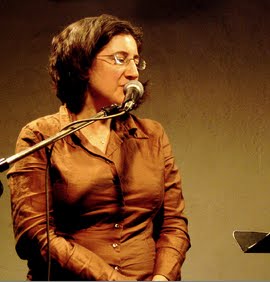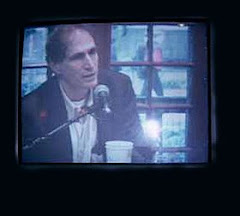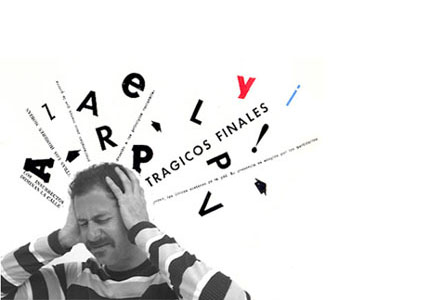PoemTalk episode 22 was a discussion of the twelfth poem in Louis Zukofsky's Anew series. Recently Michael Nardone made a first-pass transcript of the discussion and here is a piece of that (a draft). We pick up just after we've heard a recording (dated 1960) of Zukofsky reading our poem. And then:
FILREIS:
Peter Quartermain, who has written a close reading of this poem, says about the beginning that is sounds almost like doggerel. And he was on his way to praise the rhythms, very striking rhythms. Anybody want to say something about how the poem sounds, of course, now that we’ve heard Zukofsky reading it. What does it sound like at the beginning there?
PERELMAN:
Well, I remember the first time I read this poem, and being delightfully bollixed by the first line, thinking, now wait a minute, what did I just read? And it was because of the punning, and yet it’s about seeing and thinking, but clearly sound is in play as well, and the interplay between all the senses and the trans-sensual waves that he is talking about are all there in a nutshell in that opening line.
FILREIS:
And the homonym comes metrically halfway, so you get see-sea that divides a metrically mostly regular line into two bits. It gives way to longer lines, but at the beginning it is almost like doggerel.
[Zukofsky reads first lines of the poem]
BERNSTEIN:
For people not having the text of the poem, you can’t tell that the first sea is S-E-E, and the second is S-E-A.
FILREIS:
You can’t tell from context?
Yes, you can. It’s hard to understand, it’s hard to see with your eyes.
BERNSTEIN:
Nonetheless, you can’t be sure, and there’s a split always in this poem because of its reference to the quantum physics that underlies some of the subject matter between doubleness of different things, so that light can be a particle and can also be a wave. See can be S-E-E, it can be S-E-A. So the interesting thing, in respect to the sound recording, which, I think I only heard recently when we made it available on PennSound, is that what you hear with your ear is not the same as what you see with your eye because the hearing of the poem, even when you hear it yourself, it switches, and what happens over the poem is that many of the words switch in their value from one thing to another—
FILREIS:
Like an electric current almost.
BENSTEIN:
Like a sea, right.
FILREIS:
Yeah, Wystan, go ahead.
CURNOW:
I’m just saying it sounds, it’s less doggerel a line when you hear him read it.
FILREIS:
Less doggerel hearing it than seeing it on the page?
CURNOW:
Than seeing it on the page.
FILREIS:
Does anybody think he’s speaking knowledgably about these, about the world of electromagnetic science and radio?
PERELMAN:
Well, I connect this poem up with “A”-9, the first half of “A”-9 that he had finished this just a little while before and, as he says, spent two years on, where, among other things, besides using the marks, Capital for the vocabulary, he uses—
FILREIS:
--Karl Marx--
PERELMAN:
--yeah--textbook physics, a physics textbook on light that talks about exactly the same thing: matter and energy transforming back and forth. So, it’s as if a sort of mini-version of “A”-9, and a more discursive relaxed version.
7/11/10
Subscribe to:
Post Comments (Atom)


























No comments:
Post a Comment